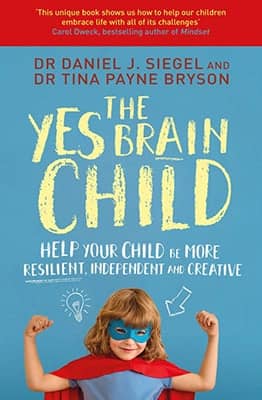
My friend Amanda is a Drama teacher. Kids of all ages love her and it’s not just because she teaches a fun subject. It’s because of the way she responds to them. She makes them feel heard and seen and as though what they have to say matters.
I watched her this week with a little group of Year 8 girls. They approached her looking excited and she asked, “What’s your news?” They answered and the way she responded to them was powerful. She created connection and confidence.
Without even being aware, Amanda used a technique that psychologists call active-constructive responding.
4 Types of Responses
There are four recognised ways that people respond to another person’s good news. Ask yourself…How do I generally respond to my child’s good news?
- Active-constructive
- I usually react to my kids’ good fortune enthusiastically
- I often ask questions and show genuine interest in my children’s news
- Passive-constructive
- I am silently supportive of the good things that happen in my children’s lives
- I say very little, but they know I am happy for them
- Active-destructive
- I remind my children that most good things have bad aspects as well
- I point out the potential downside of their good news…I’m a realist.
- Passive-destructive
- I may seem disinterested in my children’s news (even if I’m not)
- I may act as though I don’t care very much (even if I do)
Most of us use all of these response styles at some point. However, Number 1 is the only relationship builder…active-constructive responding.
What is active-constructive responding?
Active-constructive responding is a set of behaviours that promote intimacy and trust. You know it when you experience it because you feel affirmed and connected.
When Amanda asked the Year 8s what their news was, they said they had choreographed a dance. She said, “That’s brilliant. Can I see it?” They performed for her and she was excited for them, pointing out the moves she especially liked. Then she said, “Maybe you could teach it to your Homeroom group?” The girls beamed from ear to ear and went away motivated and excited.
Obviously, not every piece of good news needs to be a major production, although in Amanda’s Drama department I suspect it might be! We can celebrate little wins quietly but warmly. Take the opportunity to celebrate small wins like finishing homework ahead of time or playing a good game of netball.
Active-constructive responding moulds feelings and behaviour
Research tells us that when a person has news about themselves, the reaction of the first person they tell has a big impact on the way they view that news and whether they will share with others. This is especially important when dealing with young people figuring out who they are. When they share news about what they want to do in the future or falling in love or any aspect of their identity, your response is profoundly important.
After a while, a child will decide whether or not you’re a good person to share information with or whether they should go to someone else. If you want your child to share news with you, use active-constructive responding.
Particularly within the home, active-constructive responses make a child feel validated and loved. It helps to get us ‘in sync’ with our child and that creates a closeness that enhances attachment. According to Attachment Theory, this directly impacts the way a child experiences any future relationships.
Active-constructive responding creates positive feelings for both parties
Research shows that when someone tells us good news and we positively and actively affirm them, it improves the wellbeing of both parties. The act of sharing good news is directly linked to commitment, satisfaction, intimacy and trust. When Amanda’s Year 8s were grinning ear to ear, so was she!
Santa Maria College Psychologist Bethany O’Regan says, “The act of preparing, rehearsing, retelling and elaborating on good news cements those events and feelings in the memory. Therefore, we’re more likely to be able to recall those feelings in the future.” So, when you respond positively and actively to a child’s good news, you are creating happy memories for them that they will be able to draw on in the future. Isn’t that lovely?
What makes active-constructive responding difficult?
Active-constructive responding can be difficult because:
- We are busy and sometimes kids’ timing is bad
- We get into moods, it’s hard to be positive and attentive when you are feeling lousy
- We might not agree that the news our child is giving us is positive. For example, your daughter might be thrilled that she has a new boyfriend, but you might be appalled that he is five years older than her.
- We might underestimate how important a piece of news is to our child. For example, when a toddler says, “I found a big stick and I brung it for you.” It is a bid for an active-constructive response. We respond well because the bid for attention is obvious and the universe made toddlers cute for exactly this reason. It’s different with tweens and teens. The bid for attention is less obvious and the relationship is far more complex.
In all of these cases, we need to have the presence of mind to stop and think before responding. We will get it wrong sometimes, but if four times out of five we nail it, then we are building healthy relationships.











